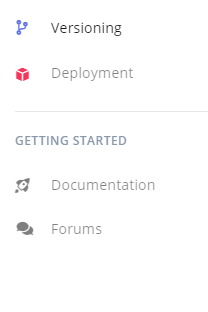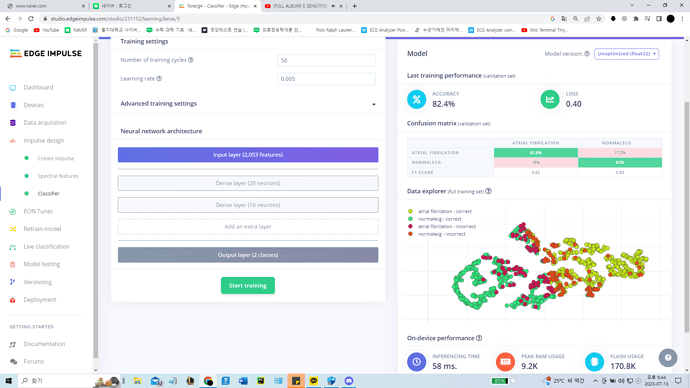Question/Issue:
To improve the electrocardiogram model, I’ve re-analyzed it, and it’s less accurate than the previous model
Project ID:
byeongyeoplee/forecg4
Context/Use case:
I had an ecg model with more than 80 percent accuracy, as shown in the picture. However, I tried many other movements to improve, but I couldn’t get more than that. So I entered the same values to return to the original model, but the accuracy is different from then. Can I get help getting back to my previous model? More than 80 percent of models are needed
Did you saved a different version (versioning)? If not, I don’t know if you can but maybe yes.
However, I think you should try increasing the training cycle numbers and in the neural network architecture you can try adding (some 2d covolutional layer for feature extraction, a flatten layer and dropout rate). By adding them it can maybe help you increase the total accuracy of your training.
- I too have experienced rolling back to an old model using the old parameters I can adjust in the Studio GUI and the Model behaves differently. I have no idea why this happens. Might be some kind of internal Studio update happened.
- Definitely add more training cycles up to the 20-minutes free Studio limit. If you are already at that limit then you might have to go with the Enterprise (paid) version of the Studio.
- Like victorinox said start using the Versioning feature of the Studio. Its 2nd from the bottom in the Studio:

Alternatively, if you have a computer with GPU, train your model locally and use Weights and Biases to keep track of your experiments. During the training phase, you can use Edge Impulse Python SDK to keep track of your RAM/Flash consumption for the selected hardware device. Check: Using the Edge Impulse Python SDK with Weights & Biases.
During your wandb experiments (or wandb sweeps), you can tune the hyperparameters, and in this way, you can explore which parameters improve the model. If changing hyperparameters doesn’t improve the model performance, you need to go back to your data and investigate if something is wrong in your data, for example, improper labelling or data pre-processing (feature engineering).
Improving performance is an iteration of data pre-precessing (feature engineering) and ML-model design.
Thank you for the information!
Thank you for the information! I will try it.
Thank you for the information!
Thanks to all of you, I have recovered to 78% accuracy.
There is a lot of research on the detection AF. If not already done, take a look into scientific research and implement an ML model from the literature and try to fit it so it can run on the device you target.
Also be aware of data leakage (overfitting), you need to split your data on the subject (patient) ID.
